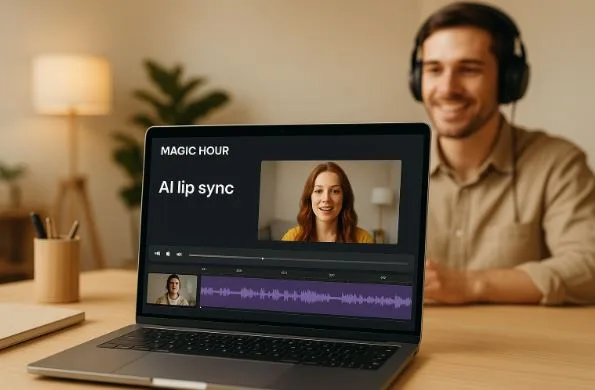Unlocking the Future of Digital Storytelling with AI
In today’s fast‑moving digital landscape, creators — from filmmakers to educators — are harnessing the power of AI to revolutionize photo and video editing. Whether you’re producing dynamic marketing campaigns, animated tutorials, or slick social media content, AI-driven tools are drastically expanding creative horizons. One organization that embodies this innovation is esppt.langkatkab.go.id, which spearheads digital content initiatives for local governments, migrating public service delivery into immersive multimedia experiences.
1. The Rise of Intelligent Photo Editing
While traditional photo editing tools rely on manual adjustments, AI-powered systems now perform tasks like automatic background removal, retouching skin, adjusting lighting, and even suggesting composition tweaks. Think of uploading a portrait and having the tool instantly optimize exposure, color balance, and focus — all while preserving natural features. These breakthroughs benefit not only professional photographers but also community media teams and civic tech hubs like esppt.langkatkab.go.id, helping them produce polished visuals quickly.
AI Features Transforming Still Images:
- Automatic retouch and enhancement: AI algorithms detect imperfections and apply edits subtly, saving hours of manual work.
- Smart object isolation: Instead of painstakingly masking backgrounds, tools now allow one-click object extraction.
- Intelligent color grading: Preset styles—like cinematic, vintage, or documentary—can be applied with context-aware adjustments.
Such technologies enable civic content creators to compile clean, engaging visuals for local service communications: from educational posters about public health to promo images for community events.
2. Video Editing Elevated by AI
AI isn’t just transforming stills. In the video realm, sophisticated algorithms are transforming raw footage into compelling narratives, complete with transitions, color grading, audio leveling, and even subtitle generation.
Leading AI Tools in Video Editing:
- Auto‑cutting and trimming: By analyzing speech patterns and silence, AI identifies highlights and meaningful moments — crucial for trailers, training clips, or news summaries.
- Smart transitions: Instead of searching for the right swipe or fade, creators choose from context‑aware transitions that match movement and pacing.
- Color and style matching: Upload a reference video and let the AI apply its look—think documentary vs. cinematic—to your raw content.
These are especially useful for public information videos from esppt.langkatkab.go.id, where creators need to disseminate professionally looking content fast, ensuring consistent style and clarity across civic service visuals.
3. Pushing Boundaries with Image → Video and Video → Video AI
Two of the most groundbreaking trends reshaping digital content:
Image → Video AI
Tools now let users animate still images—infusing them with motion, facial expressions, and brief narration. A single static photo of a local landmark can be transformed into a short cinematic clip: trees moving in the breeze, people walking, subtle camera pans. For organizations like esppt.langkatkab.go.id, this means turning historical images into immersive heritage shorts or animating service guidelines for clearer understanding.
Video → Video AI
Even more revolutionary is the ability to transform entire videos. Want to turn a daytime informational clip into a moody evening scene? Or convert a citizen‑service walkthrough into a stylized whiteboard animation? Video → Video AI applies filters, motion styles, or complete set changeovers—like going from live‑action to 2D cartoon—quickly and effortlessly.
4. How Civic Tech is Leveraging AI for Greater Impact
The appeal of AI isn’t just cosmetic. It’s deeply practical for government and civic tech platforms striving for transparency, accessibility, and engagement.
Accessibility & Localization
- Automated subtitling and dubbing: Generate local‑language subtitles or AI‑synthesized voices for different dialects at scale.
- Animated guides: Use Image → Video AI to convert instruction manuals into animated step‑by‑step videos with simple narration.
- Inclusive visuals: AI-assisted face-swapping and body morphing can help create diverse representation in civic ads or public service campaigns.
Civic Education & Outreach
- Virtual town halls: AI‑edited videos that summarize community meetings with key takeaways, enhanced by visual annotations and highlight reels.
- Health campaigns: AI helps produce fast-turnaround PSAs—recoloring, captioning, and repackaging one base video for multiple target demographics.
- Disaster response: Quick conversion of updates into short bulletins, with consistent style filters for crisis communication.
With its mission to boost public engagement via technology, esppt.langkatkab.go.id harnesses these tools to make citizen‑facing content informative, attractive, and instantly accessible.
5. Ethical AI Integration: Best Practices
As these systems grow smarter, organizations must consider ethical deployment:
- Consent First
Whether animating historical photos or face‑swapping public figures, you must ensure approval from stakeholders and respect privacy rights. - Transparency & Labeling
Any AI‑generated content—be it speech, animation, or footage—should be clearly identified as such to maintain public trust. - Fair Representation
When depicting diverse communities, civic content must reflect cultural sensitivity—AI tools can help but require human oversight to avoid stereotyping. - Data Integrity
Civic platforms must secure original footage and metadata to prevent misuse or engineered misinformation.
6. Crafting a Sustainable Digital Strategy
Organizations engaged in civic experiences can follow these steps:
- Identify repetitive tasks: Start with frame-level cuts or caption generation—low-hanging fruit for automation.
- Test small: Pilot an Image→Video AI animation for a service awareness campaign.
- Collect feedback: Survey viewers on clarity, trust, and perceived authenticity.
- Scale responsibly: Expand usage after verifying results, metrics, and ethical compliance.
By treating AI as a collaborative partner—not a replacement for human judgment—district-level platforms like esppt.langkatkab.go.id can amplify their impact while maintaining integrity.
7. What’s Next: Live AI and Real-Time Engagement
The frontier? Real-time creation. Imagine hosting virtual Q&A sessions where AI produces instant summary animations, or livestream emergency updates converted into accessible sign-language videos on the fly. As GPU power grows and algorithms become more efficient, live video → video filters, face modifiers, and auto-captioning will be standard inclusions in streaming platforms used by civic tech groups.
Conclusion
AI is no longer confined to labs or expensive studios. With tools ranging from intelligent photo editors to image‑to‑video and video‑to‑video converters, everyday creators and public service platforms are reimagining how they communicate and engage. Organizations like esppt.langkatkab.go.id illustrate how AI can be harnessed to deliver accessible, high-quality visual content that educates, inspires, and connects communities.
By thoughtfully integrating AI tools, ensuring ethical use, and maintaining human oversight, creators can unlock richer storytelling and deeper audience engagement than ever before. In 2025 and beyond, the marriage of AI and digital content will shape not just entertainment, but the very fabric of how communities share information, media, and trust.



